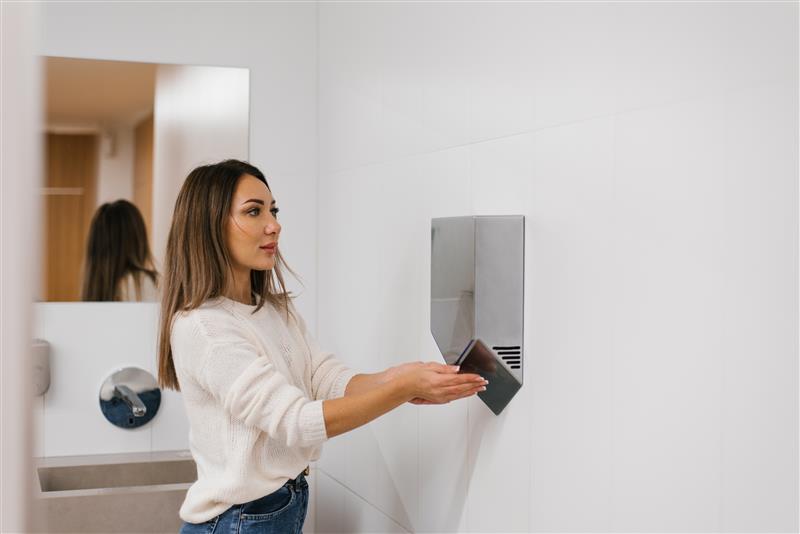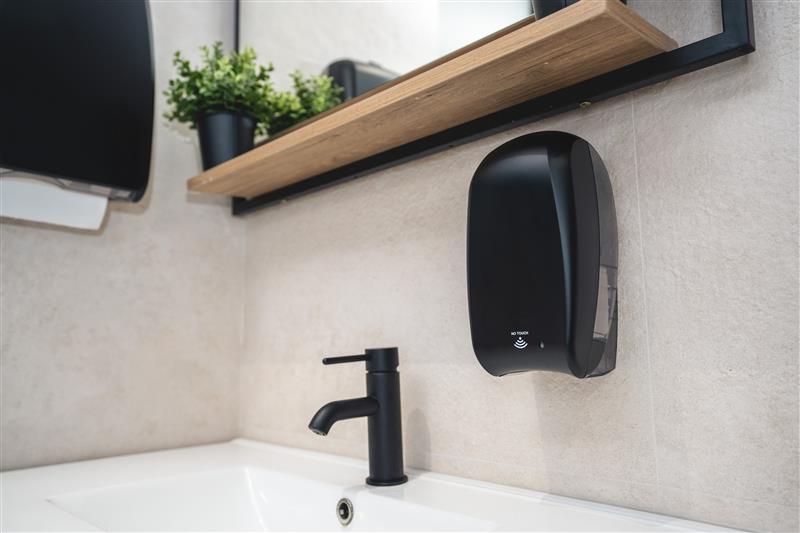Running a business means watching every dollar. Your building or warehouse rent, wages, supplies — this list seems endless. In all of this, hygiene might feel like a small line item in your budget, but in reality, it’s one of those quiet costs that sometimes eats into your profit margins month after month without you realising it.
From paying monthly for sanitary disposal bins on long-term contracts, to constantly restocking paper towels and refilling soap bottles, SMEs in Australia spend more than they realise just to “keep things clean.”
The problem isn’t that hygiene is optional — it’s that the old ways of managing it are outdated, wasteful, and more expensive than they need to be.
That’s where touchless hygiene solutions come in. They don’t just improve safety and cleanliness — they also help businesses cut costs, reduce waste, and future-proof their hygiene practices.
The cost of keeping things ‘the old way’ costs thousands of dollars!
For many small and medium businesses, hygiene costs feel predictable. You sign a contract for feminine hygiene services, you order cartons of paper towels every month, you refill soap bottles when they run out — and that’s just “how it’s done.”
But when you look closely, the old way of doing things isn’t cheap at all. These “ordinary” costs are rarely questioned, but they drain resources month after month. And unlike wages or rent, they don’t add value to your business!
Sanitary disposal bins on contracts
Many SMEs pay for feminine hygiene bins or sanitary bins through external services. The service fees might not look big on a single invoice, but over a year they stack up into thousands of dollars — especially for businesses with multiple restrooms.
Paper hand towels
They are a constant restock item that adds up on a daily basis. They not only add to waste and environmental impact. Every staff member or customer using paper towels adds to the monthly expense, and over time, these costs go up quickly.
Manual soap bottles
Standard pump bottles or bulk refills can be messy and wasteful. Staff often use too much soap, so you need to restock sooner than planned.

Why hygiene bills keep climbing — Zoomed in
If hygiene costs were just a one-off purchase, businesses could budget easily. But the real drain comes from the ongoing cycle — contracts, refills, and wasted stock that never quite shows up as a “big number” but quietly eats into margins.
Sanitary bin services lock you in
Contracts for sanitary bins often lock businesses into fixed fees, which is usually around AUD $50 whether your bins are full or half-empty. For SMEs with multiple restrooms, the service fees might not look big on a single invoice, but over a year they stack up into thousands of dollars — especially for businesses with multiple restrooms.
Paper towels pile up in every use
Similarly, paper hand towels never stop running out. The more staff or customers you have, the faster they run out. And with every order comes not just purchase cost but also storage, handling, and disposal overheads. In a study by Maribyrnong City Council it was found that they were using 7.5 million paper towels (1.5 tonnes) annually which was costing them around AUD $26,000.
Manual dispensers waste more than you think.
Manual soap dispensers also contribute to rising bills. Staff often over-pump, and standard bulk refills can be messy. A study by Gene Topper Ph.D showed that with regular liquid soap dispensers, people tended to use more water during handwashing, which led to unnecessary excess in consumption. It also highlighted that many individuals were hesitant to use manual dispensers because of hygiene concerns
When you zoom in, it’s clear that ongoing contracts, overuse, and clunky systems turn hygiene into a hidden cost many businesses overlook. These costs might not stand out straight away, but they keep adding up and quietly take money that could be better spent on growth, staff, or new ideas.
How touchless hygiene solutions can save thousands of dollars
Once you see how much the “old way” is costing, the solution becomes obvious: smarter, touchless hygiene systems. These touchless systems are not just convenient, they reduce waste, save money, and make your workplace safer.
For example, automatic soap dispensers deliver just the right amount each time, limiting overuse and restock frequency at the same time. According to another study by Gene Topper Ph.D. people used about 10% less water with foam soap. Many felt it rinsed off quicker and preferred touch-free dispensers as they seemed cleaner and easier. Less refill, less reordering; That’s money staying in your pocket, not ging down the drain.
Hand dryers are another game-changer. At Maribyrnong City Council they switched to hand dryers at an initial cost of approximately AUD $6,000 but expects to save around AUD $26,700 annually, with a payback period of only 12 weeks ROI of around 345% in the first year alone.
Sanitary disposal bins can also be smarter. Modern systems, like touchless sanitary bins, streamline refills and reduce unnecessary service calls. This means less invoices, less waste, and more predictable expenses for SMEs. Its hygiene made simple, safe, and cost-effective.
When we combine these touchless solutions, they turn hygiene from a hidden overhead into a strategic advantage. For Australian businesses, using these systems doesn’t just save money — it keeps the workplace safe and helps meet local rules.
When budget-friendly is eco-friendly too
One of the best things about touchless hygiene solutions is that they save money and help the environment at the same time. Even small changes can make difference. In short, choosing touchless hygiene solutions is a win-win
Turning hygiene into a long-term investment
Modern hygiene isn’t simply a cost; it’s a method to make your organisation safer, more efficient, and ready for the future. The upfront investment pays for itself, while giving you peace of mind that your workplace stays clean, safe, and compliant year after year.







